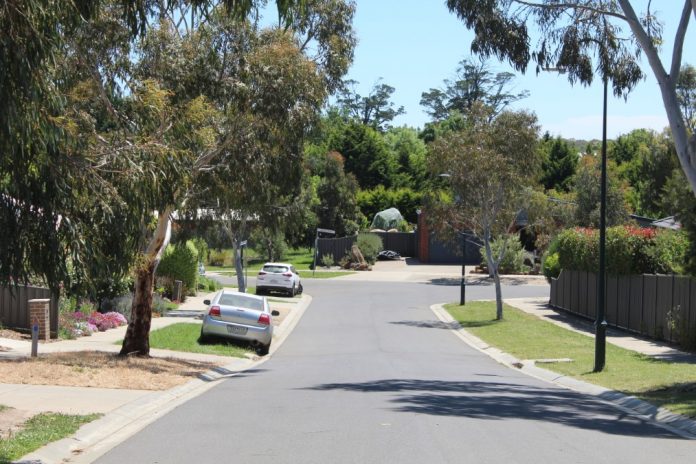
Parking fines look imminent for residents of a Kyneton housing estate who say they have no other option than to park on their naturestrips.
Parking officers last week resumed full patrols and the issuing of fines in Macedon Ranges following scaled back activity from April.
The move comes as COVID-19 restrictions ease and visitors return to the area. Patrols have resumed as normal and targets include parking on naturestrips and advertising vehicles for sale on council land.
Parking officers issued warnings for illegal naturestrip parking to Bluestone Rise residents back in June, in response to complaints in the Kyneton area.
But residents say roads in Bluestone Rise are as narrow as six metres, preventing cars from safely parking on both sides at once and allowing through-traffic.
“When there are more than two driving adults living in the house, or people have additional work vehicles, it makes it hard for people to contain their vehicles within their properties,” one resident told the Express.
“There are constantly vehicles parked on naturestrips here because it is the next best thing to having two cars parked opposite each other and vehicles not being able to get through. What do they expect us to do?”
The Bluestone Rise residential estate was granted a planning permit for subdivision in 2004 and standards have since changed.
Council’s director of planning and environment Angela Hughes said what was approved some 16 years ago, might not be approved today under current standards.
“Planning practice in the past has been to allow narrower roads on the basis that on-street car parking is not likely to be required, as the new lots created are large enough to accommodate any cars associated with a new house,” Ms Hughes said.
Council’s director of assets and operations Shane Walden said fines were imposed for naturestrip parking as vehicles could cause damage to surrounding infrastructure.
“Parking on them can damage the naturestrip surface, trees and root systems, kerb and channel, paths, house drain connections and other underground services,” he said.
The council’s current engineering requirements state a double carriageway 7.3m road is recommended for residential streets supporting access for 51-100 lots.
The CFA has indicated in the past that a road should be at least 7.3m wide to allow for parking on both sides and still enable access by a fire truck while a road 5.5m wide will allow parking on one side of the road only.
“Widths between these may encourage parking on both sides of the road so that access by a fire truck is not possible,” it stated.
Council’s decision on width of new roads within new housing estates is dependent on several factors including anticipated traffic volume, speed limit, designated on-street parking and neighbourhood character.






